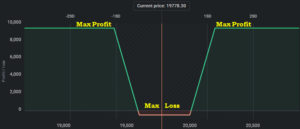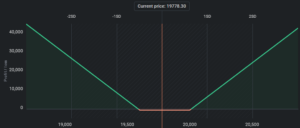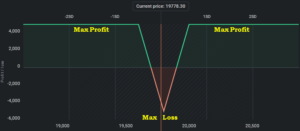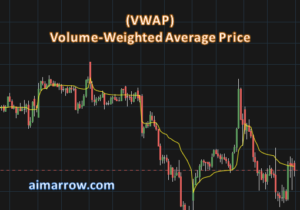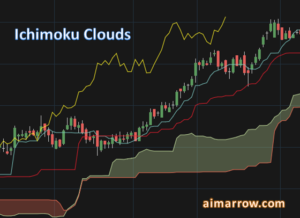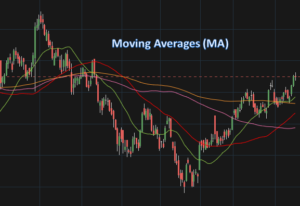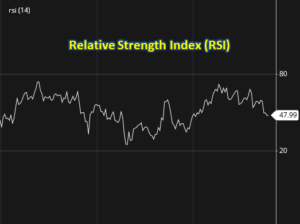Bear Call Spread Options Trading Strategy | Step-by-Step Execution Process, Payoff Graph, Pros & Cons, Adjustments
Introduction to Bear Call Spread Options Trading Strategy
The bear call spread is an options trading strategy that is used when an investor is moderately bearish on a stock or an index. This strategy involves selling a call option with a lower strike price and buying a call option with a higher strike price, both with the same expiration date. The goal is to generate income by selling the call option while limiting the potential loss with the purchase of the higher strike call option.
Example of Bear Call Spread Options Trading Strategy
Let’s say an investor believes that a particular stock, XYZ, is overvalued at its current price of $100 per share and may experience a small drop in price in the near future. The investor can execute a bear call spread strategy as follows:
- Sell a call option with a strike price of $105 and an expiration date of one month for a premium of $2 per share.
- Buy a call option with a strike price of $110 and an expiration date of one month for a premium of $1 per share.
In this example, the investor receives a net premium of $1 per share, or $100 total ($2 premium received for selling the $105 call minus $1 premium paid for buying the $110 call). The maximum profit the investor can make is the net premium received, which is $1 per share, or $100 total.
Process of Executing Bear Call Spread Options Trading Strategy
Step 1: Determine the market outlook The investor should have a moderately bearish outlook on the underlying stock or index. The stock should be expected to decrease in price slightly over the short term.
Step 2: Select the options The investor should sell a call option with a lower strike price and buy a call option with a higher strike price, both with the same expiration date. The strike price of the sold call option should be above the current price of the stock, while the strike price of the bought call option should be even higher.
Step 3: Determine the premium The investor should determine the premium received for selling the call option and the premium paid for buying the call option.
Step 4: Calculate the net premium The net premium is calculated by subtracting the premium paid for the bought call option from the premium received for the sold call option.
Step 5: Determine maximum profit and loss The maximum profit is limited to the net premium received, while the maximum loss is limited to the difference between the strike prices of the two options, minus the net premium received.
Step 6: Place the order The investor should place the order with a broker to sell the call option and buy the higher strike call option.
Pros and Cons of Bear Call Spread Options Trading Strategy
Pros:
- Limited risk: The maximum loss is limited to the difference between the strike prices, minus the net premium received.
- Income generation: The investor receives a net premium at the outset, which is the maximum profit they can make.
- Flexibility: The strategy can be adjusted if the market outlook changes.
Cons:
- Limited profit potential: The maximum profit is limited to the net premium received.
- Requires careful selection of options: The strike prices must be selected carefully to balance risk and reward.
- Requires market timing: The strategy requires the investor to be correct in their prediction of the stock price movement.
Payoff Graph for Bear Call Spread Options Trading Strategy
The payoff graph below illustrates the potential outcomes for the bear call spread strategy:
The x-axis shows the stock price, while the y-axis shows the profit or loss. The blue line represents the payoff at expiration, while the orange line represents the payoff at the time the options are sold.
Adjustments to the Bear Call Spread Options Trading Strategy
When in profit: If the stock price drops significantly and the investor has already made a profit, they can close out the trade by buying back the sold call option and selling the bought call option. The investor can then open a new bear call spread trade with a lower strike price for the sold call option, which will provide a higher net premium.
When in loss: If the stock price rises above the strike price of the sold call option, the investor will start to incur losses. If the investor believes that the stock price will continue to rise, they can roll up the sold call option to a higher strike price by buying back the existing option and selling a new call option with a higher strike price. This will increase the net premium received and provide some downside protection.
Conclusion
The bear call spread is an options trading strategy that can be used when an investor has a moderately bearish outlook on a stock or an index. The strategy involves selling a call option with a lower strike price and buying a call option with a higher strike price, both with the same expiration date. The goal is to generate income by selling the call option while limiting the potential loss with the purchase of the higher strike call option. The strategy has pros such as limited risk and income generation but also cons such as limited profit potential and the requirement for careful selection of options. The investor can make adjustments to the strategy when in profit or in loss. It is important to understand the risks involved and to seek the advice of a professional before executing any options trading strategy.

